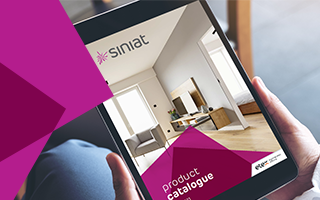Nobody enjoys a trip to the hospital. It is associated with stress, illness and pain and being in an alien place away from the familiar comforts of home. When it comes to hospital visits, there is an urgency to get it “over and done with” and get back home as soon as possible.
Fortunately, the focus of contemporary hospital design is slowly changing toward the patient experience to make hospital visits less harrowing, and to transform healthcare facilities from mere treatment establishments to spaces that promote nurturing and self-healing.

‘Healing architecture’
There is an increasing trend toward designing hospitals with patient‐centered features like improved natural light, visitor friendly facilities, well‐decorated rooms and hotel‐like amenities, and it has even led to the term “healing architecture”.
In the past hospital design focused on infection control as its main priority. Spaces had to allow for easy cleaning, easy access and enough room for equipment as medical technology became more sophisticated. There was an emphasis on practicality rather than aesthetics or the patient experience.
Over the past few decades the effect of the hospital environment on the healing process has become an important consideration, with many architects now aiming to design hospitals that “don’t feel like hospitals”.
The focus of healing architecture is to engage patients in the process of self-healing and recovery by designing spaces that are nurturing and therapeutic. This includes the elimination of environmental stressors such as the lack of privacy, artificial lighting, unwelcoming colour schemes and poor air quality.
The concept of healing architecture is founded on the evidence based design method, meaning the design of health care environments is increasingly guided by research linking physical environment to healthcare outcomes.
Acoustics take a backseat
Designers and architects spend much time on the visual aspect of creating patient-friendly hospitals, perhaps because it is easy to see the difference it makes. Patients are quick to pick up on the visual aspect and to verbalise their experience in patient surveys.
Children’s hospitals now often have creative murals in primary colours to make the environment less stressful, and colour schemes in wards have gone from sterile white to warmer, natural tones to make it more homely. Artworks are often displayed in hallways and wallpaper depicting nature scenes is used to create feelings of serenity and calmness.
Contemporary hospitals feature interior gardens with water features, and there is an emphasis on creating more private spaces where patients can socialise with family and friends while they recover. The role of natural light in the healing process is also recognised, and preferred over stark, fluorescent lighting.
But too often acoustics still take a backseat in healing architecture.

From bad to worse
Maybe it is because acoustics is less understood and patients don’t comment on it in patient surveys, that acoustics is often neglected in hospital design. Patients might notice the effects of noisy environments such as stress and poor sleep quality without realising that poor acoustics is at the root of the experience.
Unfortunately research suggests that acoustics in healthcare facilities is not only overlooked, but that we are, in fact, going from bad to worse. In a recent study published in the BMJ, researchers from King's College London and the University of the Arts London (UAL) argue that noise levels in hospitals are a growing problem, with levels regularly exceeding international recommendations.
Acoustical engineers at John Hopkins University have also found that since 1960, average daytime hospital sound levels have risen from 57 decibels to 72 dB, while average nighttime levels have jumped from 42 to 60 dB – all far exceeding the World Health Organization’s recommendation of 35 dB as a top measure for sound levels in patient rooms.
In case it isn’t clear just how significant this increase in noise is, with respect to human hearing, a 10 dB(A) increase is perceived as an approximate doubling of loudness.
The studies indicate noise levels are even out of control in intensive care units where the most vulnerable patients are treated. The UK study reports that noise levels over 100dB have been measured in the ICU - the equivalent of loud music through headphones.

Why all the noise about noise?
Many studies have been done on the effect of hospital noise on healing and recovering, and it has been proven that exposure to constant noise has a negative effect on the body and mind, and can induce irritation, fatigue and despondency.
Hospital noise has also been implicated in the development of a condition known as intensive care psychosis - a form of delirium where patients become paranoid and experience anxiety and hallucinations.
In one study, heart attack patients exhibited higher pulse amplitudes in a poor acoustic environment than in a good acoustic environment at night-time. It suggests that hospital noise might have a greater effect on patients at night-time because background noise tends to be lower, making noise disturbances more noticeable and stressful.
High noise levels and noise-induced stress don’t only impact negatively on patients but on staff performance and wellbeing as well. It can compromise caring behaviour and contribute to burnout.
The solution
Acoustical comfort should be part of every stage of the design of healthcare facilities and include sound absorbing materials and surfaces for greater acoustical comfort.
Knauf’s Stratopanel is a wall and ceiling lining that offers excellent acoustic performance, combined with CLEANEO Technology air cleaning properties. It provides a seamless monolithic look with continuous perforation.
Stratopanel satisfies the requirements for fire protection and hygiene requirements, and is the ideal solution for healthcare facilities.
We also recently introduced Cleaneo Up and Cleaneo Adit. These highly absorbent acoustic panels make it easy to improve the sound of indoor environments and comply with the acoustic standards and regulations for different environments, while enhancing the space with visual design highlights.
To read more about the acoustic considerations in the design of healthcare facilities, download our e-book Acoustic Design for Healthcare.
For more information, visit knauf.solutions or call us on 1300 724 505.







